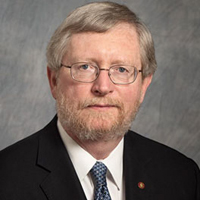
 |
 |
| Building Inspector Praised for Finding Faulty Flue in Collierville, Tenn., Home David Stewart doesn't think of himself as a hero, but some of his co-workers in the Town of Collierville's code enforcement division, an ICC Member, think he saved a family from a life-threatening situation. In mid-January, Stewart, who has been a town building inspector for 20 years, was sent to Jackie and Chris Keller's Collierville home to inspect a coil replacement inside the furnace. Stewart did not give his final approval because the furnace's flue pipe, which carries excess heat and carbon monoxide out of the home, was concealed and he was unable to get a complete view of it. Stewart convinced the Kellers and town building official Tim Pendleton to allow him to investigate the flue pipe, and he found that it did not extend through the home's roof and that gas fumes and exhaust heat were flowing into the attic. "There was heat charring to some of the roof members and could have started a fire real easily," Pendleton said. "In my mind he potentially saved the lives of the family." Jackie Keller said the family was in Stewart's debt. "I told him we'll send him a Christmas card for the rest of his life." "I'm doing my job and protecting the citizens in Collierville," Stewart said. "It's what each of our inspectors do." SOURCE: Memphis Commericial Appeal |
| Back to top |
California Adopts New Building Standards The new code includes stricter energy efficiency requirements and more-straightforward rules for accessibility. Given California's reputation for regulation, the state's 2013 Building Standards Code could have been a headache and a half for builders. |
| Back to top |
 |
Steve Winkel Appointed to California Building Standards Commission Steven Winkel, FAIA, P.E., CASp, was appointed to serve as the Architect Member to the California Building Standards Commission (CBSC). First appointed in 1999, this reappointment marks the beginning of his fourth, four-year term. As testimony to the level of respect for Winkel, his reappointment to the CBSC was endorsed with letters of support from CALBO, SEAOC, CBIA, CBPA and BOMA. Steven Winkel, FAIA, P.E., CASp, was appointed to serve as the Architect Member to the California Building Standards Commission (CBSC). First appointed in 1999, this reappointment marks the beginning of his fourth, four-year term. As testimony to the level of respect for Winkel, his reappointment to the CBSC was endorsed with letters of support from CALBO, SEAOC, CBIA, CBPA and BOMA.Winkel is recognized, regarded and respected as an expert in building codes and regulations. In addition to being a licensed architect for more than 40 years, he is a licensed civil engineer, landscape architect and a Certified Access Specialist. Since 2005, he has managed the San Francisco office of The Preview Group. Winkel is also the author of several books on building codes. The CBSC is responsible for the administration and implementation of each building code cycle, which includes the proposal, review and adoption processes. SOURCE: AIA Online |
| Back to top |
| Indian Shores to Name Community Center after Former Building Official Lawrence Nayman, the former building official for Indian Shores who passed away in 2012, will be honored with a namesake in the Indian Shores Municipal Center. The community room on the fourth floor of the Indian Shores Municipal Center is set to be named after Nayman, according to the Beach Beacon. The naming was reccomended by Mayor Jim Lawrence and approved unamiously by the town council. Nayman had been a big part in the work of getting the new municipal center and and citizens had requested part of the building be named after him when passed in July of last year. SOURCE: Pinellas Beaches Patch |
| Back to top |
 |